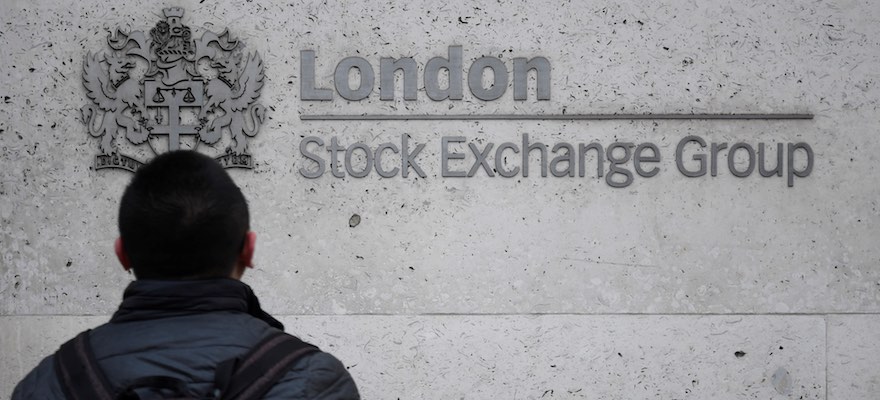Saron Chhem pays in dollars whenever she spends more than $10 in Cambodia’s capital of Phnom Penh. She uses local riel bills, which trade for about 4,000 to the greenback, like pocket change.
Chhem’s approach to money is an enduring legacy from the late 1970s, when cash and property became worthless under Pol Pot’s Khmer Rouge, and it risks undermining future economic growth that would leave Cambodia trailing its peers in Southeast Asia.
“There’s no authority to force people to use the riel,” said Chhem, who helps raise money at the Cambodian Children’s Fund and, like most locals employed in the private sector, is paid in U.S. currency. “People have gotten used to using dollars.”
Unlike neighboring Vietnam, Cambodia has thus far refrained from forcing businesses and people to use the riel for fear of destabilizing an economy less than 0.2 percent the size of China’s. Its status as Asia’s “most dollarized” country leaves it vulnerable to changes in U.S. monetary policy and erodes export competitiveness as the greenback strengthens, according to the International Monetary Fund.
Policy makers are now trying to change that. They’re relying on an economy that’s forecast to grow faster than China’s to win confidence in the local currency. Government salaries, taxes and utility bills are paid in riel and the three stocks listed on the Cambodia Securities Exchange
Exchange
An exchange is known as a marketplace that supports the trading of derivatives, commodities, securities, and other financial instruments.Generally, an exchange is accessible through a digital platform or sometimes at a tangible address where investors organize to perform trading. Among the chief responsibilities of an exchange would be to uphold honest and fair-trading practices. These are instrumental in making sure that the distribution of supported security rates on that exchange are effectiv
An exchange is known as a marketplace that supports the trading of derivatives, commodities, securities, and other financial instruments.Generally, an exchange is accessible through a digital platform or sometimes at a tangible address where investors organize to perform trading. Among the chief responsibilities of an exchange would be to uphold honest and fair-trading practices. These are instrumental in making sure that the distribution of supported security rates on that exchange are effectiv
Read this Term trade in it.
The greenback effectively replaced the riel after the Khmer Rouge abolished money and blew up the central bank in a communist revolution that killed an estimated 1.7 million people from 1975 to 1979, leaving the nation without a monetary system. The IMF attributes the riel’s low acceptance to that experience, noting that gold and even rice were preferred as payment when the currency was reintroduced in 1980.
Today, most restaurants, hotels and shops in Phnom Penh and tourist areas such as Siem Reap quote prices in dollars. Even home loans are offered in the U.S. currency by banks including Acleda Bank Plc, the nation’s biggest, and ANZ Royal Bank, the local unit of Australia & New Zealand Banking Group Ltd., according to the lender’s websites.
Dollarization Cost
The extent of dollarization forces the National Bank of Cambodia to delegate its monetary policy to the U.S., according to the IMF, curbing the central bank’s ability to respond to external shocks. A stronger greenback threatens to constrain the nation’s garment exports, and the industry’s contribution to economic growth declined in 2014, the IMF said in a November report.
Japan’s yen and the riel have strengthened the most in the past year among 18 Asian currencies tracked by Bloomberg, with most of their regional peers weakening. Vietnam’s dong depreciated by about 4 percent in the period while the riel advanced about 1 percent. The two countries both export clothes to Europe and the U.S.
Still, Cambodia’s economy grew 7 percent in 2015 and its expansion has averaged 7.5 percent in the past 10 years, central bank data show. Exports increased 15 percent last year and 14 percent in 2014, mainly driven by shipments of apparel.
‘More Expensive’
“Prices of garments and rice from Cambodia have become more expensive due to the appreciation of the dollar, but we’ve yet to see signs of major impact,” said Samsen Neak, a former World Bank economist who currently heads market research at the Nuppun Institute for Economic Research in Phnom Penh. “It’s time to come up with a de-dollarization plan.”
Foreign currency, comprising mainly dollars, accounted for 83 percent of cash and bank deposits in Cambodia at the end of last year, up from 56.3 percent in 1995, according to the central bank. In Vietnam, where pricing goods and services in dollars is prohibited, authorities estimate the greenback’s use has dropped to a record low of 10 percent, from 16 percent at the end of 2011.
“We don’t want to use administrative measures that could scare investors,” said Chea Serey, director general of central banking at the National Bank of Cambodia, which is working with the government to draft a plan to reduce dependence on the dollar. “We are trying to build confidence in people’s minds about their own currency.”
‘Behavioral Change’
“Behavioral change” is needed for the riel to gain wider acceptance, and while the central bank hasn’t set a deadline to achieve this goal, it could happen within the next decade or so, Serey said. The NBC plans to develop local foreign-exchange and money markets by attracting more participants and offering new products and services, she said.
The authorities are being pragmatic, as evidence elsewhere shows the use of force “can be counter-productive,” said Stephen Higgins, managing partner at Mekong Strategic Partners in Phnom Penh, and the former chief executive of ANZ Royal Bank.
Mexico’s decision to convert dollar deposits to the local currency in 1982 led to capital flight, and bank credit to the private sector “almost halved” over the next two years, according to a 2011 IMF report. Growth slowed significantly and inflation soared.
The extent of the challenge remains stark. In Siem Reap, home to the Angkor Wat temple and the centuries-old remains of the Khmer Empire, children peddle souvenirs for a dollar. A few miles away, the Pool and Palm Villa bills guests and pays its employees in the U.S. currency, according to Cees van Sluijs, the resort’s founder.
“It’s much simpler,” he said. “If you calculate in riel, it’s often complicated.”
To contact the reporter on this story: Netty Ismail in Singapore at nismail3@bloomberg.net. To contact the editors responsible for this story: Garfield Reynolds at greynolds1@bloomberg.net, Amit Prakash, Paul Dobson
By: Netty Ismail
©2016 Bloomberg News
Saron Chhem pays in dollars whenever she spends more than $10 in Cambodia’s capital of Phnom Penh. She uses local riel bills, which trade for about 4,000 to the greenback, like pocket change.
Chhem’s approach to money is an enduring legacy from the late 1970s, when cash and property became worthless under Pol Pot’s Khmer Rouge, and it risks undermining future economic growth that would leave Cambodia trailing its peers in Southeast Asia.
“There’s no authority to force people to use the riel,” said Chhem, who helps raise money at the Cambodian Children’s Fund and, like most locals employed in the private sector, is paid in U.S. currency. “People have gotten used to using dollars.”
Unlike neighboring Vietnam, Cambodia has thus far refrained from forcing businesses and people to use the riel for fear of destabilizing an economy less than 0.2 percent the size of China’s. Its status as Asia’s “most dollarized” country leaves it vulnerable to changes in U.S. monetary policy and erodes export competitiveness as the greenback strengthens, according to the International Monetary Fund.
Policy makers are now trying to change that. They’re relying on an economy that’s forecast to grow faster than China’s to win confidence in the local currency. Government salaries, taxes and utility bills are paid in riel and the three stocks listed on the Cambodia Securities Exchange
Exchange
An exchange is known as a marketplace that supports the trading of derivatives, commodities, securities, and other financial instruments.Generally, an exchange is accessible through a digital platform or sometimes at a tangible address where investors organize to perform trading. Among the chief responsibilities of an exchange would be to uphold honest and fair-trading practices. These are instrumental in making sure that the distribution of supported security rates on that exchange are effectiv
An exchange is known as a marketplace that supports the trading of derivatives, commodities, securities, and other financial instruments.Generally, an exchange is accessible through a digital platform or sometimes at a tangible address where investors organize to perform trading. Among the chief responsibilities of an exchange would be to uphold honest and fair-trading practices. These are instrumental in making sure that the distribution of supported security rates on that exchange are effectiv
Read this Term trade in it.
The greenback effectively replaced the riel after the Khmer Rouge abolished money and blew up the central bank in a communist revolution that killed an estimated 1.7 million people from 1975 to 1979, leaving the nation without a monetary system. The IMF attributes the riel’s low acceptance to that experience, noting that gold and even rice were preferred as payment when the currency was reintroduced in 1980.
Today, most restaurants, hotels and shops in Phnom Penh and tourist areas such as Siem Reap quote prices in dollars. Even home loans are offered in the U.S. currency by banks including Acleda Bank Plc, the nation’s biggest, and ANZ Royal Bank, the local unit of Australia & New Zealand Banking Group Ltd., according to the lender’s websites.
Dollarization Cost
The extent of dollarization forces the National Bank of Cambodia to delegate its monetary policy to the U.S., according to the IMF, curbing the central bank’s ability to respond to external shocks. A stronger greenback threatens to constrain the nation’s garment exports, and the industry’s contribution to economic growth declined in 2014, the IMF said in a November report.
Japan’s yen and the riel have strengthened the most in the past year among 18 Asian currencies tracked by Bloomberg, with most of their regional peers weakening. Vietnam’s dong depreciated by about 4 percent in the period while the riel advanced about 1 percent. The two countries both export clothes to Europe and the U.S.
Still, Cambodia’s economy grew 7 percent in 2015 and its expansion has averaged 7.5 percent in the past 10 years, central bank data show. Exports increased 15 percent last year and 14 percent in 2014, mainly driven by shipments of apparel.
‘More Expensive’
“Prices of garments and rice from Cambodia have become more expensive due to the appreciation of the dollar, but we’ve yet to see signs of major impact,” said Samsen Neak, a former World Bank economist who currently heads market research at the Nuppun Institute for Economic Research in Phnom Penh. “It’s time to come up with a de-dollarization plan.”
Foreign currency, comprising mainly dollars, accounted for 83 percent of cash and bank deposits in Cambodia at the end of last year, up from 56.3 percent in 1995, according to the central bank. In Vietnam, where pricing goods and services in dollars is prohibited, authorities estimate the greenback’s use has dropped to a record low of 10 percent, from 16 percent at the end of 2011.
“We don’t want to use administrative measures that could scare investors,” said Chea Serey, director general of central banking at the National Bank of Cambodia, which is working with the government to draft a plan to reduce dependence on the dollar. “We are trying to build confidence in people’s minds about their own currency.”
‘Behavioral Change’
“Behavioral change” is needed for the riel to gain wider acceptance, and while the central bank hasn’t set a deadline to achieve this goal, it could happen within the next decade or so, Serey said. The NBC plans to develop local foreign-exchange and money markets by attracting more participants and offering new products and services, she said.
The authorities are being pragmatic, as evidence elsewhere shows the use of force “can be counter-productive,” said Stephen Higgins, managing partner at Mekong Strategic Partners in Phnom Penh, and the former chief executive of ANZ Royal Bank.
Mexico’s decision to convert dollar deposits to the local currency in 1982 led to capital flight, and bank credit to the private sector “almost halved” over the next two years, according to a 2011 IMF report. Growth slowed significantly and inflation soared.
The extent of the challenge remains stark. In Siem Reap, home to the Angkor Wat temple and the centuries-old remains of the Khmer Empire, children peddle souvenirs for a dollar. A few miles away, the Pool and Palm Villa bills guests and pays its employees in the U.S. currency, according to Cees van Sluijs, the resort’s founder.
“It’s much simpler,” he said. “If you calculate in riel, it’s often complicated.”
To contact the reporter on this story: Netty Ismail in Singapore at nismail3@bloomberg.net. To contact the editors responsible for this story: Garfield Reynolds at greynolds1@bloomberg.net, Amit Prakash, Paul Dobson
By: Netty Ismail
©2016 Bloomberg News















